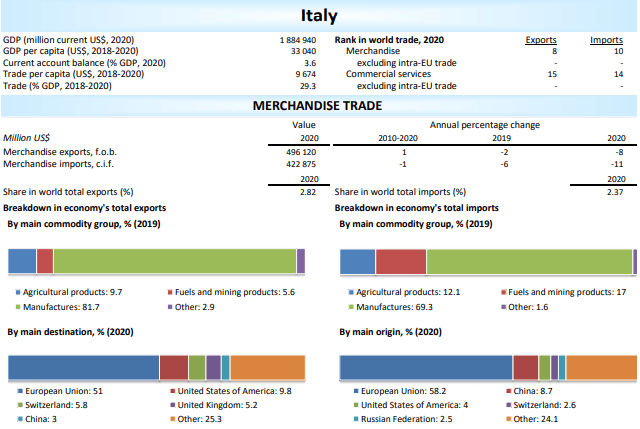In the profile of Italy it stands out that more than half of its exports and imports involve other countries of the European Union.
Italy’s exports are predominantly manufactured goods, including industrial machinery, office machinery, automobiles, clothing, footwear, and textiles.
What else to highlight? In recent years, Italy has registered a trade surplus, which went from € 49.6 billion in 2016 to € 56.1 billion in 2019.
Then, in 2020, the trade surplus was € 63.6 billion, driven mainly by the export of manufactured products, in particular production machinery, textiles, and leather products, and rubber, plastic, non-metallic mineral products, and by the decrease in imports of electricity, gas, steam, air conditioning.

But in 2020, its exports of goods and services declined 13.8% in volume compared to a 1.2% increase in 2019. The decline, common to the major euro area countries, largely mirrored that of world trade.
According to information from the Italian government, while exports of goods increased at a slower pace compared to 2019 by approximately 9.8%, Italy’s share of the world market in 2020 remained stable at 2.8% at prices and rates of change currents.
Italy Profile
The nation is fully integrated into the European and world economies, and imports and exports in 2020 represent 23.5 and 27.6% of real GDP, respectively.
Italian exports were affected by the contraction of world trade and the temporary suspensions of productive activities due to restrictions related to the coronavirus pandemic, as well as the appreciation of the euro against other currencies.
However, after an initial drop in the first half of 2020, sales of goods rose rapidly to levels of previous years and Italy’s share of global goods trade remained substantially unchanged.
Conversely, in 2020, imports decreased 12.7%, mostly due to a decrease in purchases related to the extractive industries and manufacturing industries, compared to a 0.7% increase in 2019.
![]()

